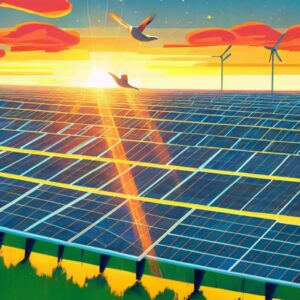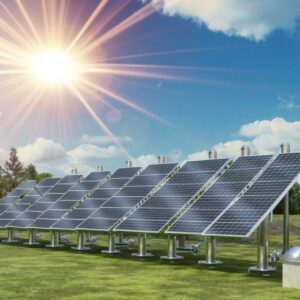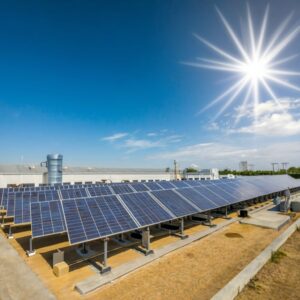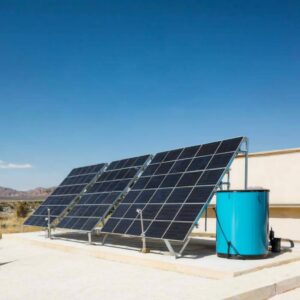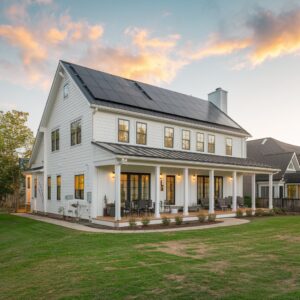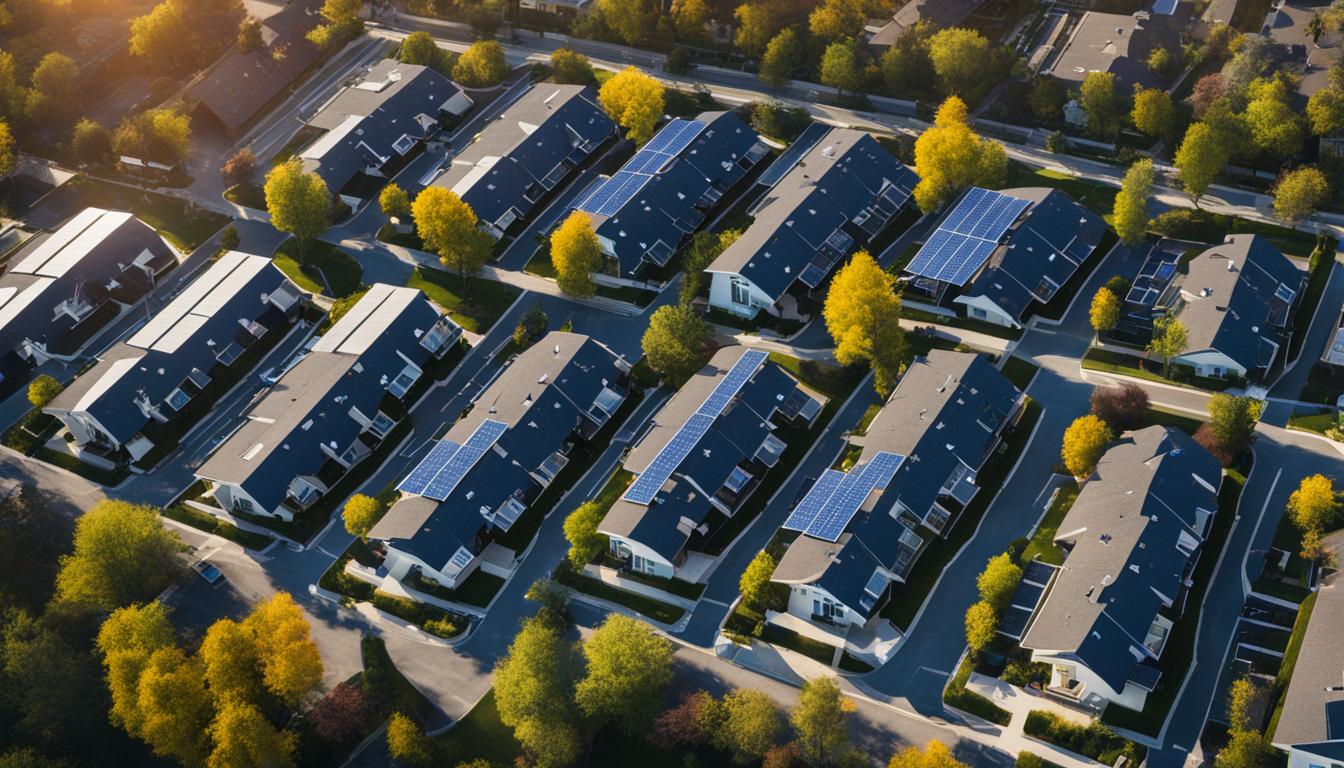
Solar power is an incredible source of renewable energy that has gained significant popularity in recent years. If you’re new to the world of solar power, you may be wondering how solar panels work and how they can benefit you. In this beginner’s guide, we’ll explore the basics of solar panel technology and shed light on their inner workings.
Solar panels, predominantly made of silicon cells, have the remarkable ability to convert sunlight into usable electricity through a process called the photovoltaic effect. These panels come in two main types: monocrystalline and polycrystalline. Monocrystalline panels are made from a single crystal of silicon and are known for their high efficiency. On the other hand, polycrystalline panels are created by melting together many fragments of silicon and are generally more cost-effective.
No matter the panel type, solar panels can be a long-lasting investment. With a lifespan of 25 to 30 years or more, they continue to function efficiently even on cloudy or rainy days. This renewable energy source not only helps reduce your carbon footprint but also lowers your electric bills and provides the opportunity to power remote locations.
Key Takeaways:
- Solar panels convert sunlight into usable electricity through the photovoltaic effect.
- There are two main types of solar panels: monocrystalline and polycrystalline.
- Solar panels can last 25 to 30 years or more, making them a long-lasting investment.
- Solar power offers benefits such as lower electric bills and the ability to power remote locations.
- Switching to solar power helps reduce carbon emissions and dependence on fossil fuels.
How Solar Panels Are Made and What They’re Made Of
Solar panels are marvels of engineering, composed of various components that work together to harness the power of the sun. Understanding these components is crucial for anyone interested in solar energy. Let’s explore how solar panels are made and the materials they are constructed with.
The Components of Solar Panels
Solar panels consist of three main components:
- The Encapsulation/Back Sheet: This layer provides protection for the solar cells and acts as electrical insulation. It safeguards the delicate solar cells from moisture, dust, and other environmental factors, ensuring their longevity.
- The Frame: The frame of a solar panel, typically made of aluminum, provides the necessary structural support. It ensures that the panel remains stable and secure, even in high winds or extreme weather conditions.
- The Solar Cells: Solar cells are the heart of the panel, responsible for converting sunlight into electricity. They are usually made of silicon, a semiconductor material that has the ability to generate an electric current when exposed to light. There are two main types of solar cells used in panels: monocrystalline and polycrystalline.
Monocrystalline vs. Polycrystalline Solar Cells
The choice between monocrystalline and polycrystalline solar panels often boils down to performance and cost considerations:
- Monocrystalline Panels: These panels are made from silicon wafers cut from a single crystal of silicon. This manufacturing process results in higher efficiency and a sleek uniform appearance. Monocrystalline panels are an excellent choice for homeowners with limited space or those seeking maximum energy output.
- Polycrystalline Panels: Made by melting together fragments of silicon, polycrystalline panels have a lower price point due to the manufacturing process. Although their efficiency may be slightly lower compared to monocrystalline panels, they still offer good performance and are a cost-effective option for many homeowners.
When considering solar panels, it is essential to select a reputable brand that offers a performance guarantee of at least 25 years. This ensures that your investment will provide reliable electricity for years to come.
Now that we’ve explored the components and types of solar panels, let’s delve into the cost of solar panel installations in the next section.
The Cost of Solar Panels and Installation
When considering solar panel installation, it’s essential to understand the associated costs. The price of a solar panel installation varies depending on several factors such as location, property type, roof material, and panel type. To determine the overall cost, it’s crucial to consider both the solar panel cost and installation cost.
Let’s start with the solar panel cost. The price per watt is a consistent measure used across the United States. On average, most homeowners can expect to pay between $2.90 and $3.90 per watt. This price includes the solar panels themselves and other necessary components for the system.
The installation cost encompasses various expenses, including labor, permits/inspections, inverters, structural and electrical Balance of System (BOS), and sales tax. It’s important to note that these costs can vary depending on your location and the complexity of the installation.
Breakdown of Solar Panel Installation Costs
| Cost Component | Estimated Percentage of Total Cost |
|---|---|
| Labor | 20% |
| Solar Panels | 35% |
| Inverters | 10% |
| Permits/Inspections | 5% |
| Structural and Electrical BOS | 15% |
| Sales Tax | 5% |
It’s important to understand that while cost is a consideration, it’s equally vital to prioritize quality over cost. Investing in high-quality solar panels and installation services ensures long-term reliability and performance. Cheaper options may result in the need for repairs or lower overall output, reducing the long-term savings potential.
By choosing wisely and considering the long-term benefits, solar panels can provide significant savings on electricity bills and contribute to a more sustainable future.
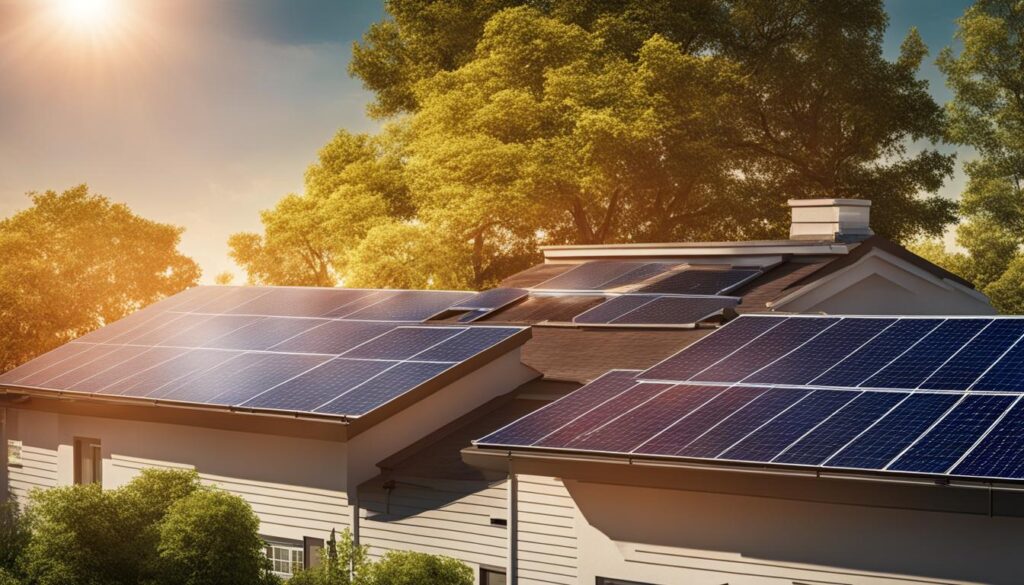
The Lifespan and Performance of Solar Panels
Solar panels are a long-term investment that can provide clean and renewable energy for many years. Understanding the lifespan and performance of solar panels is essential for making an informed decision when considering solar power as an energy solution.
Solar panels typically have a lifespan of 25 to 30 years or more, making them a reliable source of electricity. While the energy production of solar panels may gradually decrease over time, they can still generate a significant amount of power even after several decades of use.
One of the key advantages of solar panels is their ability to work efficiently in various weather conditions. Unlike traditional heating systems that rely on heat, solar panels are powered by light. This means they can generate electricity even on cloudy or rainy days, ensuring a consistent energy supply.
To ensure the durability and performance of solar panels, rigorous testing is conducted. These tests include damp heat tests and thermal cycling, which simulate harsh environmental conditions. By subjecting solar panels to these tests, manufacturers can ensure that they can withstand extreme temperatures, humidity, and other challenging situations.
When choosing solar panels, it is advisable to look for UL certification. UL certification guarantees that the panels have undergone thorough testing and meet strict safety and performance standards. By opting for UL certified solar panels, you can have peace of mind knowing that you have invested in reliable and long-lasting equipment.
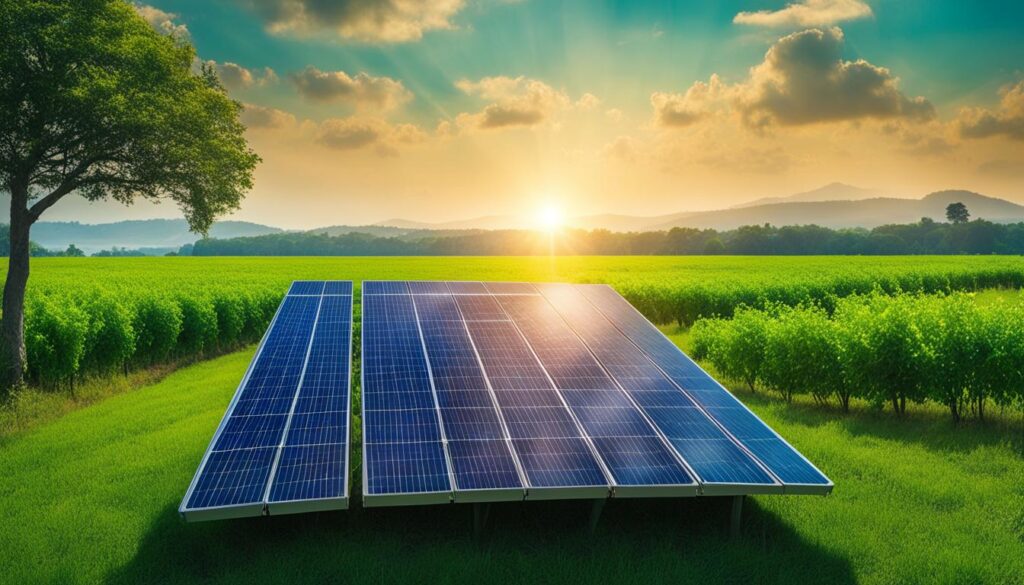
Investing in solar panels with a long lifespan and reliable performance is crucial for maximising the benefits of solar power. By understanding the lifespan and performance of solar panels, you can make an informed decision and enjoy clean, renewable energy for years to come.
Advantages of Using Solar Power
Solar power offers numerous advantages for individuals and the environment. By harnessing the energy from the sun, solar power presents a renewable and sustainable source of electricity. This not only reduces the carbon footprint but also lowers our dependence on fossil fuels.
One of the significant advantages of switching to solar power is the potential for lower electric bills. When compared to traditional utility companies, solar power systems can provide substantial savings. By generating your own electricity, you become less reliant on the utility grid, which directly translates into reduced monthly bills.
In addition to financial benefits, solar power systems offer remote power generation capabilities. This means that even in areas without access to power lines, solar panels can supply electricity. This opens up opportunities for powering remote locations such as cabins, campsites, and off-grid homes.
Furthermore, investing in solar energy systems can increase the value of your property. Homes equipped with solar panels tend to sell at higher prices, as they are seen as energy-efficient and environmentally friendly. By incorporating solar power, you not only enjoy the advantages during your ownership but also benefit from potential future gains when selling your property.
Conclusion
Solar panels offer a powerful and sustainable solution for generating electricity. By harnessing the energy of the sun, these panels produce clean and renewable power, reducing both electricity costs and carbon emissions. For beginners looking to invest in solar power systems, understanding the fundamentals of how solar panels work and their components is crucial.
By considering factors such as panel types, cost, lifespan, and advantages, individuals can make informed decisions about their solar journey. There are two main types of solar panels: monocrystalline and polycrystalline, each with unique characteristics and price points. Costs of solar panel installations can vary depending on location, property type, and roof material, but the long-term savings and benefits are significant.
It’s important to note that solar panels can last for 25 to 30 years or more, providing consistent electricity production throughout their lifespan. Even on cloudy or rainy days, solar panels can efficiently convert sunlight into electricity. To ensure reliability and longevity, it’s recommended to choose solar panels that are UL certified.
With their numerous advantages, including lower electric bills, reduced dependence on fossil fuels, and the potential to improve property value, solar panels are an excellent investment for both homes and businesses. Embracing solar power is not only environmentally friendly but also economically beneficial in the long run. So, for beginners seeking a greener and more sustainable energy option, solar panels are an ideal choice.
FAQ
What is solar power?
Solar power is the ability to convert energy from the sun into usable electricity through the use of solar panels.
How do solar panels work?
Solar panels, made primarily of silicon cells, capture sunlight and convert it into electricity through the photovoltaic effect.
What are the different types of solar panels?
There are two types of solar panels: monocrystalline, made from a single crystal of silicon, and polycrystalline, made by melting together many fragments of silicon.
What are the components of a solar panel?
Solar panels are made up of various components, including encapsulation/back sheet, frame, and solar cells.
How long do solar panels last?
Solar panels can last 25 to 30 years or more, and they work efficiently even on cloudy or rainy days.
Are solar panels reliable?
Solar panels are rigorously tested to ensure their reliability and longevity, and it is recommended to choose UL certified solar panels.
How much does a solar panel installation cost?
The cost of a solar panel installation varies based on location, property type, roof material, and panel type, with most homeowners paying between .90 and .90 per watt.
What are the advantages of using solar power?
Solar power offers numerous advantages, including renewable energy, lower electric bills, and the ability to power remote locations.

